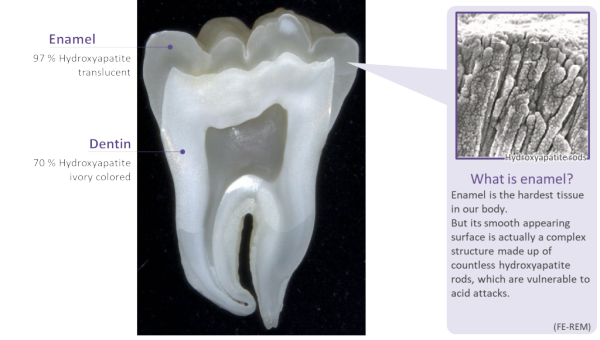HYDROXYAPATITE
What is 'hydroxyapatite'? Though still not well known, it's a major component of the human body, comprising roughly 97% of tooth enamel, 70% of dentin and 60% by weight of bone, in each of which it is present at nano-scale. Even in its synthetic form, nano-hydroxapatite is biocompatible, biodegradable, biomimetic, and safe to swallow. As a result, it's used widely in medical and dental applications such as implant coatings and bone fillers, as well as in food supplements and remineralizing chewing gum. Saliva has been described as a super-saturated solution of hydroxyapatite, the components of which it supplies constantly to the teeth, to maintain their mineral density in the face of acid attack.

SANGI's original ingredient nano<mHAP> is a non-abrasive form of hydroxyapatite developed specifically for oral care use. It is recognized in Japan as having three anti-caries functions: (1) adhering to and helping remove decay-causing bacteria and plaque, (2) filling microscopic fissures on the tooth surface which can harbor plaque, and (3) remineralizing demineralized areas below the tooth surface which are the first step toward decay (incipient caries lesions). It also relieves hypersensitivity by occluding and forming a coating over exposed dentinal tubules. Initially 3-figure nano-scale (with primary particles averaging around 100nm), it was reduced in size to 2-figure nano-scale (averaging around 50nm) in 2003, enhancing its remineralizing effect. (1 nanometer = one millionth of a millimeter)
